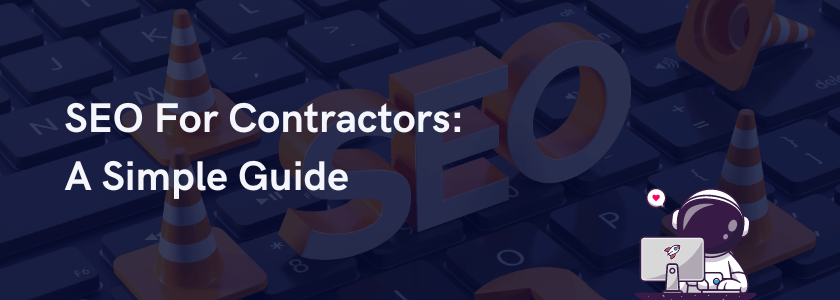A competitive analysis is part of the strategy on how to find competitors of a company or brand to have an idea about their products, sales, and marketing strategies.
By performing a thorough competitive analysis, any business can:
- Develop new products and services
- Identify gaps in the market
- Market and convert more sales effectively
- Discover new and emerging market trends
Steering the mother ship in the right direction involves the following simple steps:
Find Competitors
Companies that solve the same problem and operate within the same target market are considered competitors. Some good examples are Mastercard vs. Visa, Nike vs. Adidas, and Coke vs. Pepsi. Each of these companies and brands promote the same product to the same market.
However, not every business that offers a similar product is considered a direct competitor. Cafes and restaurants, for instance. Both serve food and are places to eat, but one is for quick bites and refreshments while the other is for full meals. Hence, they don’t necessarily compete with each other.
The first step to take when conducting a competitive analysis is to find up to five relevant competitors. A business can pinpoint its competitors through the following steps:
By Looking at Keyword Overlaps
A company doesn’t have to search for five direct competitors at once. They only need to know at least one and use that information to track others.
Competitive analysis tools available online show the list of websites that are ranking for the same keywords. However, it is important to note that some of the domains on the report are websites that earn through ads or affiliate marketing. Hence they aren’t competitors.
Apart from the competitive analysis tools, Google also has a search operator that searches for sites related to a particular domain. Although it doesn’t give back results that are as comprehensive, it provides a handful of related sites nonetheless.
The format to perform a search through Google is as follows: related:competitor.com For example, related:facebook.com
Looking at Who’s Advertising
Searching for businesses that vie on industry-standard keywords pinpoints direct competitors. For this reason, it’s more reliable than looking at organic traffic overlaps that may look at blogs or sites that feature different business models.
By looking at ads for a specific keyword such as “email marketing software,” a company should know its biggest competitors in the email marketing software industry.
Competitive analysis tools can also provide an Ads History report that contains historical data for ads relating to a particular keyword.
Reviewing Category Listings
Websites such as Yelp and G2 curate a list of brands and companies that offer the same products and services.
This method of finding businesses in the same industry is fast and straightforward. However, not all companies on the list are direct competitors.
How To Find Competitors of a Company: Perform a Background Research
Knowing more about the competitor’s history and background information can provide valuable insight and put many things into perspective.
Companies should check for the following information about their competitors:
- The year that their company was established
- Revenue
- # of employees
- # of clients
- Corporations they acquired, if any
- Capital investors, if any
There are also company overview websites that provide income statements showing the revenue of publicly-traded companies in the past year.
Information about a private company’s revenue, together with insights into their business strategy, among others, can be obtained by googling C-level Corporate interviews.
To keep up with the competition, a company should exert effort and resources to know what it’s up against in backing, size, and finance.
Conduct an Analysis of the Competitors’ Products and Services
The lifeblood of any business is its product or service. A company should understand its competitor’s offer and the kind of reception the target market provides in response to create a competitive advantage.
The last thing that a company wants to do is to copy the same product that competitors offer. Instead, it should focus on product development as guided by what the market demands.
When analyzing the competitors’ products and services, consider obtaining answers for most, if not all, of the following:
- What is the competitor’s market share?
- What is the profile of their ideal customer, and what are their corresponding needs?
- What are their means of products/services distribution?
- Are they low-cost or high-cost providers?
- Do they have a different pricing strategy for online purchases vs. brick and mortar?
- How does their company differentiate itself from the rest of the competition?
How To Find Competitors of a Company: Be a Mystery Shopper
To evaluate the products and services of a company in the most objective way possible is to become one of their clients.
Do the following while acting as a customer:
Obtain a first-hand experience of the entire buying process
Subscribe to one of the company’s services or buy one of their products and try it out. More importantly, take note of problems or obstacles encountered in the process of shopping for a product, subscribing to a service, or a combination of both.
Finally, keep track of the things that the company does exceptionally well for reference.
Notice their Sales Tactics
Obtain more details about the company’s sales tactics by answering the following:
- Does the company run a promotion or offer discounts?
- Do they upsell other services or offer products after closing a sale?
- Was there an attempt to upgrade to a more expensive product or service? How did they deliver the sales pitch?
The information gathered here will prove invaluable for both sales and marketing teams to drive revenue more effectively.
Rate their Level of Customer Service, Onboarding Process, and Customer Retention Programs
A friendly and reliable live support never fails to improve customer satisfaction, improve retention, and convert previously skeptical prospects into loyal clients. Coming up with various scenarios is a great idea to test the competitor’s customer service quality.
While onboarding processes and customer retention programs aren’t applicable for all products, they are crucial in gauging if a particular service is useful and effective.
Essentially, they offer insight into what the competitor is doing to ensure that customers will keep coming back consistently.
How To Find Competitors of a Company: Perform a SWOT Analysis
After finishing all the tests mentioned above, it’s time to put together every piece of data by performing a SWOT analysis.
A SWOT analysis is a simple yet effective way of developing a company’s business strategy. It stands for Strengths, Weaknesses, Opportunities, and Threats.
Strengths and weaknesses are internal and cover things that the company has control over, therefore, can change. Under strengths, the advantages of the company product or service over its competitors are highlighted. At the same time, the disadvantages of the same product or service are listed under weaknesses.
Opportunities and threats are external and usually happen in a larger market outside the company. It’s up to the company to take advantage of the opportunities and protect its assets from threats. However, both are outside the company’s capacity to change.
The SWOT analysis organizes all the gathered information in a comprehensible format and accessible page. As a result, any company will benefit from the reliable business strategy that this analysis will yield.
Key Takeaway
It’s imperative to conduct a competitive analysis to establish a baseline and know where it currently stacks up from the rest of the competition.
Although it’s highly effective in creating a solid marketing strategy, it’s not a one-time thing. Instead, it should be done periodically, as the business and its competitors evolve, together with their target market.
The key is to put all findings in one place and take actionable steps toward developing game-changing tactics and strategies.





